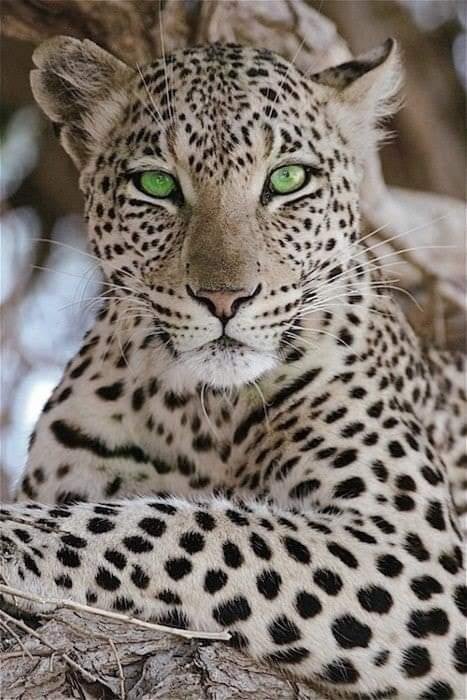AMUR TIGER
RANGE: Native to Amur-Ussuri river region, bordering China and Russia. They are not native to Siberia, so the name “Siberian” tiger is not accurate. They are now called Amur tigers to be descriptive of their native region.
SIZE: Amur tigers weigh between 400 and 650 pounds, with males being larger than females. Their height averages 3.5 to 4 feet at the shoulder. Males can be 9 to 12 feet from the head to the tail tip.
PHYSICAL FEATURES: Largest of all big cats. Their coat has a striped, yellow-orange appearance and is lighter in color than a Bengal tiger’s coat. They have a thick undercoat during winter. Each tiger has a unique striping pattern, similar to a fingerprint, retractable claws and large canine teeth.
FOOD: Wild Amur tigers feed on deer and wild pigs, occasionally taking fish to supplement their diet.
BEHAVIOR: Only 1 in 10 hunting trips is successful, so these tigers spend much of their time hunting. They can mate at any time of the year. Females will urinate and scratch trees to signal their readiness to mate. Females are receptive for only 3 to 7 days, so mating occurs several times during this period. She gives birth to 3 or 4 blind cubs in a den after a gestation of three to four months. Cubs remain with mother for 3 to 5 years.
CONSERVATION: Amur tigers are critically endangered, with fewer than 300 found in the wild today. Threats include loss of habitat, prey and illegal trade in tiger body parts.
PLANT NOTES: Amur tigers hunt prey who are closely reliant on forests. Tigers are adapted to hunt in this environment using camouflage to ambush prey. As forests are cleared for development, prey species become dispersed with higher mortality. This causes tigers to travel through open terrain, making them more vulnerable to humans.
SNOW LEOPARD
LIFE SPAN: 15 to 20 years in captivity.
RANGE: Found in the Himalayan Mountains, from the upper regions of Mongolia and down into China.
SIZE: Male snow leopards are larger than females. Snow leopards vary in weight from 55 to 165 pounds.
PHYSICAL FEATURES: The snow leopard stands approximately two feet at the shoulder and four feet in length, not including the tail. Their tails are almost as long as their bodies and used to balance as they jump across steep, rocky terrain. Their hind legs are well-muscled and allow them to climb or chase agile prey. Their fur is smoky grey with a yellowish hue. They are covered with beautiful “rosette” markings.
FOOD: Feed on bharal (blue sheep), tahr, musk-deer, marmots, pheasant and other small birds.
BEHAVIOR: Most active during early morning and late afternoon hours. Mating occurs in late winter and early spring with cubs born in April and May. Gestation lasts from 98 to 103 days. Litter sizes range from 1 to 3 cubs. Cubs remain with mother for up to 2 years. They are able to breed by age 3.
CONSERVATION: Snow leopards were classified as endangered, however they were recently reclassified as vulnerable because populations were assessed at over 2,500 individuals with less than a 20% decline. It is hard to predict where their status will end up in the future given their wide dispersal over a large area, ability to find each other and breed successfully and the continued threats they face. Their future is still very uncertain. To learn more about the change in conservation status, visit the IUCN RED LIST page. Threats include fur and body part trade, along with loss of habitat and prey. In their native land, they are perceived as a threat to livestock. The International Snow Leopard Trust works to help wild leopards by providing alternatives to poaching.
CANADIAN LYNX
LIFE SPAN: 20 years in captivity.
RANGE: This is the only wild cat species native to Alaska. The lynx is found in most of northern North America and is common in Alaska except in the Aleutian islands, Kodiak Island, islands in the Bering Sea and some of the islands in Prince William Sound.
SIZE: Weigh 18 to 30 pounds, with some males over 40 pounds.
PHYSICAL FEATURES: Long legs, a short and black-tipped tail, large feet that act as snowshoes and long hair tufts on their ears for camouflage in forests.
FOOD: Snowshoe hare are a major part of their diet. Population numbers reflect the cyclic rise and fall of snowshoe hare populations. Hare numbers build to a high and crash every 8 to 12 years, so lynx numbers follow the same trend. Their connected cycles are an excellent example of prey species regulating predator numbers. Other prey include birds, voles, and foxes. Lynx will occasionally hunt moose, caribou or Dall sheep and they feed on carrion when available.
BEHAVIOR: Lynx are expert climbers, but usually hunt on the ground. Climbing is usually seen when they are escaping a perceived threat, especially when young. Lynx catch prey by stalking and pouncing, with an occasional sprint. They often travel 5 to 10 miles per day, but may be forced to travel greater distances if food is scarce. Lynx are active at night, although often seen hunting during long summer days in Alaska. It is possible for lynx to become habituated to human areas where pet food is left outside, on decks for example. This may lead to their destruction or injuries to people or pets. Those living in forested areas where lynx are seen should keep their pet food inside.

Hi! I am a robot. I just upvoted you! I found similar content that readers might be interested in:
https://www.alaskazoo.org/amur-tiger-snow-leopard-lynx